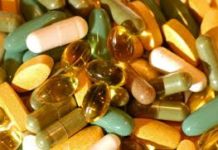While often referred to as Vitamin B15, pangamic acid is not generally recognized as a vitamin, since there is neither an established essential need nor a well defined deficiency model for this natural water soluble compound. Originally introduced into the American nutritional market based upon research conducted by Soviet sports scientists, little if any research has been conducted in the U.S. Consequently, pangamic acid has come under scrutiny due to the controversial claims made for its effectiveness in the treatment for a wide range of diseases such as cancer, alcoholism, heart disease, drug addiction, diabetes, glandular and central nervous system disorders.
What research does exist suggests that pangamic acid acts as an antioxidant that acts synergistically when taken with vitamins A and E. This purported antioxidant property may help explain why pangamic acid is so highly touted for its ability to confer protection against urban air pollutants, extend cell life, stimulate increased immune system response, lower blood cholesterol levels, protect the liver from the ravages of alcohol, cure fatigue, ward off hangovers, and assist in the regulation of hormones.
Natural sources for pangamic acid include brewers yeast, whole brown rice, sesame seeds and pumpkin seeds. Supplemental pangamic acid obtained from apricot pits is commercially available, though FDA analysis of many commercial products claiming to contain vitamin B15 indicate that many contained no pangamic acid at all.
Common use is 50 to 150 milligrams per day. There are no known toxic effects from pangamic acid, though some users report experiencing nausea initially. This can be avoided by taking with food, preferably the largest meal of the day.














[…] http://www.healthsupplementsnutritionalguide.com/inositol/ (for inositol) https://nutritionreview.org/2013/10/vitamin-b15-pangamic-acid/ (for Vitamin […]
No established need for methyl donors…………..hmmm